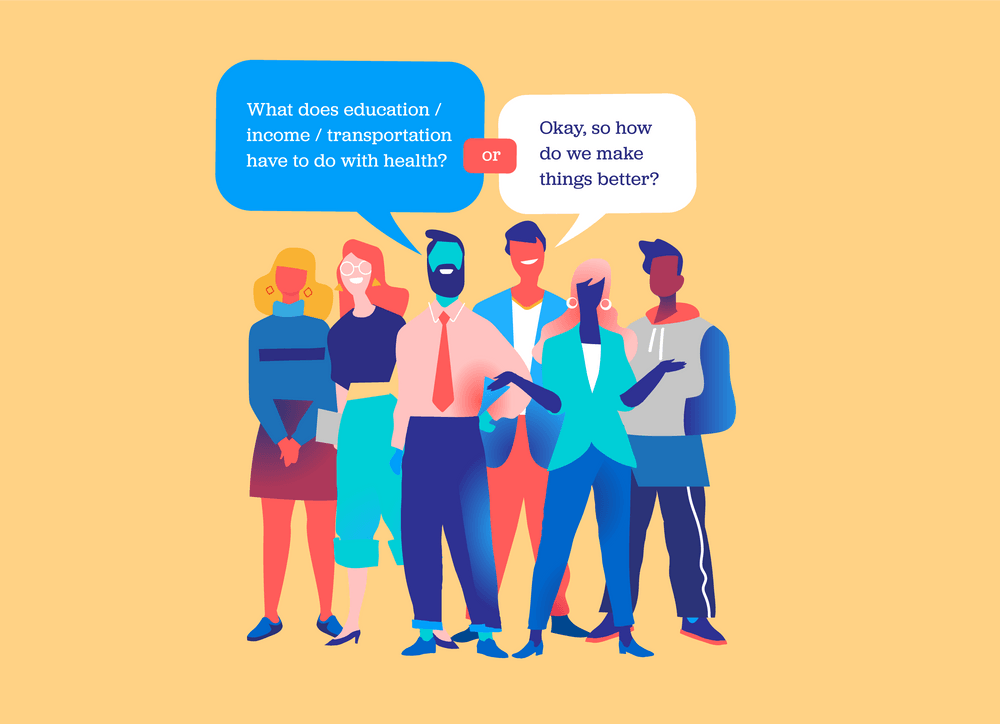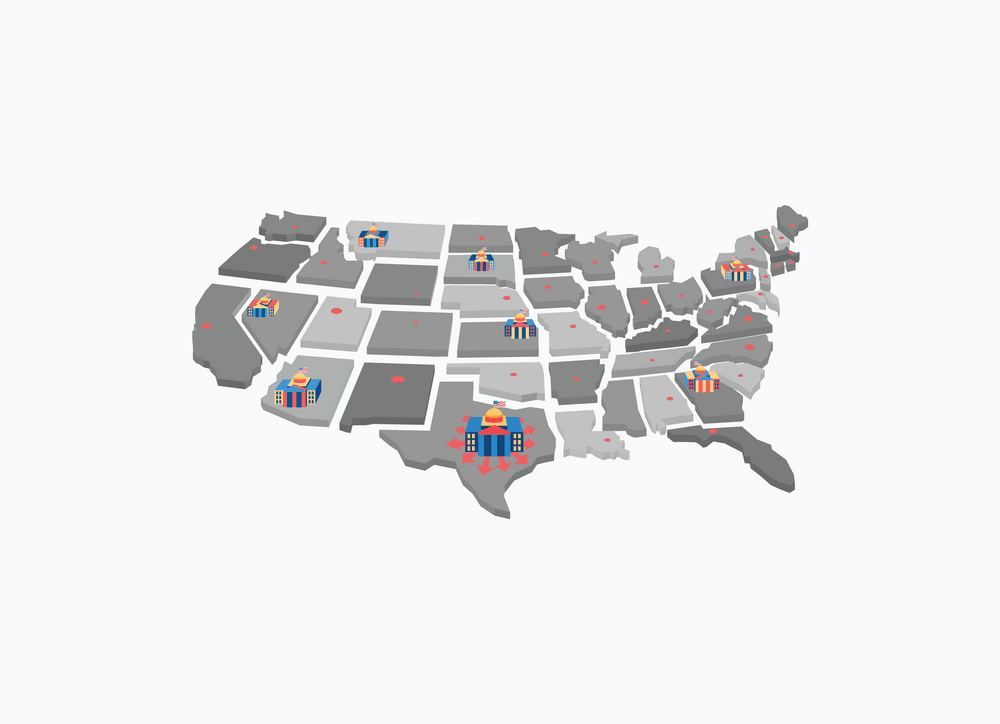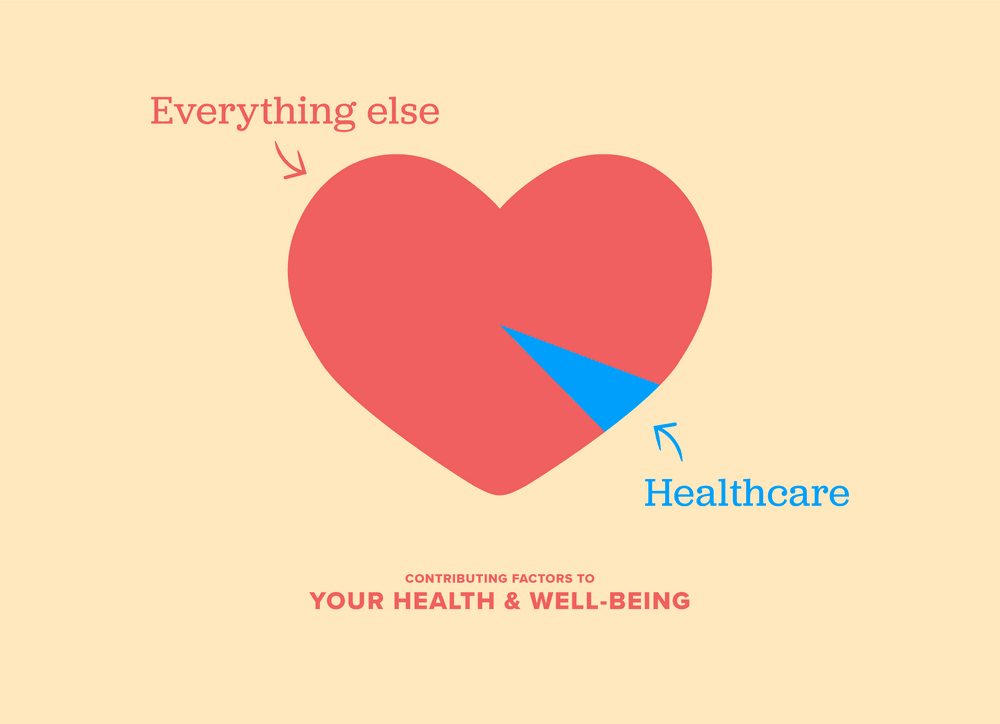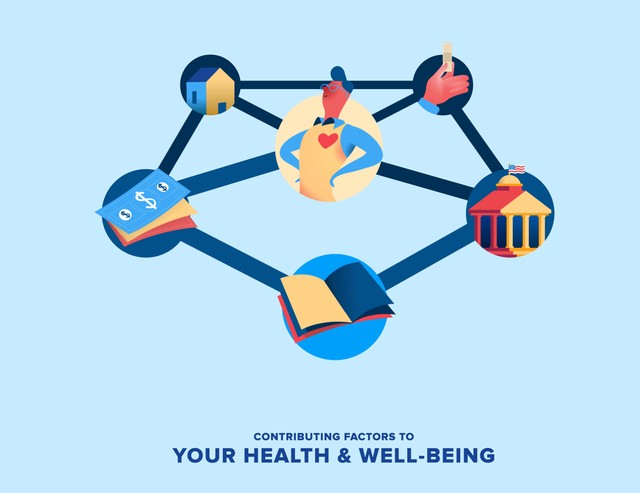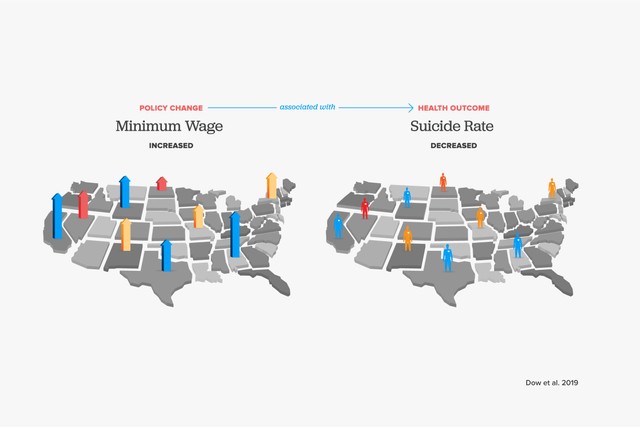Learn More
We answer the questions: ‘What shapes health?’ and ‘What can be done about it?’

When we talk to people about our work, we often get some version of one of two questions.
“What do these issues have to do with health?” or “Okay, so how do we make things better?”
This page is here to answer those questions. If those aren’t questions you have, and you’re ready to dive into taking action, please visit our Take Action page for resources to improve health in your state.
Your health depends, in part, on the state you call home. That’s no accident. Living conditions in states are changing, and these social and environmental factors affect our health.
These conditions are shaped by programs and policy approaches taken by states (and at the national and local levels, too).
The good news is that policies can be changed, and we know enough about the factors that shape health outcomes to get a sense of where to start.
Research doesn’t yet tell us the exact extent to which policies can change population health, but we do know what shapes our opportunity to lead healthy lives. And while it may seem obvious to expect health care (e.g., health insurance, access to doctors and medication) to matter most, an extensive body of research tells us that education, income, and environment are more important, and more effective, in creating the opportunities to make healthy choices (e.g., exercising, not smoking) or obtain medical care.
What improves health — living conditions like education, transportation, housing, and income — also improves economic opportunity and social mobility (our children’s chance of getting ahead and climbing the economic ladder). These factors are all interconnected.
For example, a state where people have higher levels of education is more attractive to employers providing high-paying jobs with good benefits. Those jobs not only improve employees’ access to medical care, but can also provide income that improves families’ access to good housing, healthy and safe neighborhoods, and reliable transportation.
Workers who are paid well can better afford to live in neighborhoods that are safe for exercise, near grocery stores stocked with healthy options, and zoned to well-funded schools for their children. On the other hand, policies that restrict opportunities can be harmful to our health.
The tax revenue from higher incomes and higher property values then reinforce economic growth by bringing further support for schools, neighborhood amenities, and other services — continuing to make the area more attractive to new employers and to workers with the skills and training they seek.
The cycle can work in reverse, as well. Policies that lead to disinvestment in people and places (redlining is a particularly devastating historic example) ultimately create spaces with limited opportunity for health and wellbeing — with fewer jobs, underperforming schools, and limited access to quality housing, reliable transportation, healthy food, and safe spaces to play or exercise. People of color and the poor are disproportionately exposed to these conditions, perpetuating long standing health inequities that exist for structural reasons, such as systemic racism or other forms of discrimination.
There is perhaps no more poignant an example of this health divide than what we’ve seen play out as states have grappled with the COVID-19 pandemic. Historically marginalized populations — with higher risks of chronic diseases that put them at greater risk of mortality, limited access to health care, and the types of employment and resources that do not support social distancing or working from home — have experienced higher rates of infection and death and devastating economic losses, while more privileged populations have the tools to better protect themselves.
Which policy action(s) a state should take to improve health outcomes — whether for chronic diseases or an acute crisis like COVID-19 — depends on local circumstances. We invite you to use our site to uncover which social and environmental conditions need the most attention, and what improvements may be most appropriate or feasible for your state.
Want to know more about which policy solutions to consider, and which have evidence of being effective? Visit our Take Action page, where we’ve listed resources and organizations that identify specific, data-driven solutions aimed at improving population health and wellbeing.
